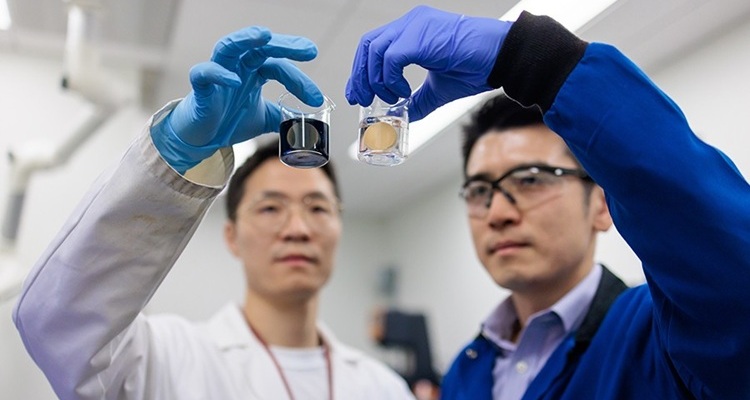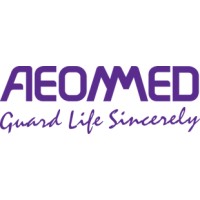Breast Cancer Screening Machine Learning Software Receives CE Mark
|
By HospiMedica International staff writers Posted on 15 Oct 2018 |
A new deep learning-based breast cancer screening software has received the CE mark and will be launched within the UK’s National Health Service (NHS) and European healthcare systems. The software has been developed by Kheiron Medical Technologies (London, UK), a start-up that combines novel deep learning methods, data science, and radiology expertise to enable diagnostics designed to detect cancers and improve patient outcomes.
Deep learning uses powerful artificial neural networks and high performance computing to analyze complex medical images with precision. Kheiron’s breast cancer screening software aims to facilitate more efficient and accurate breast cancer detection at an earlier stage of the disease and reduce the number of women incorrectly subjected to invasive biopsies, unnecessary radiation and detect more cancers at the crucial early stages. In an independent multi-center clinical study to evaluate its performance prior to submission for CE approval, the deep learning- software demonstrated indications of performance above the average national benchmarks for breast screening radiologists.
With the CE regulatory approval, health care providers in Europe will now be able to use Kheiron’s breast cancer screening software as a second reader of mammographic images in a breast cancer screening setting. Clinicians will be able to receive results within seconds, directly into their existing workflows, incorporating case-wise recall decision support and lesion localization. By using the software as a second reader, the screening workload of overstretched clinical staff in all screening settings will potentially reduce, allowing them to focus on other more complex modalities and tasks. Additionally, the CE marking will allow for intelligent triaging of imaging studies prior to review, enabling radiologists to prioritize studies based on the algorithm’s findings.
“With UK radiology workforce shortages in the spotlight, regulatory approval could actually position the UK and Europe as the world’s earliest adopters of AI at scale,” said Kheiron’s Chief Medical Officer, Dr. Christopher Austin. “European national breast screening programs can now take the lead and demonstrate how to leverage high quality, proven, and safe machine learning technologies to run screening programs better, smarter and more cost-effectively for millions of women.”
“These are exciting times for the breast imaging community and in particular breast screening,” said Dr Nisha Sharma, Consultant Breast Radiologist, Director of Breast Screening & Clinical Lead for Breast Imaging at Leeds University Hospitals Trust, and Secretary for the British Society of Breast Imaging. “Software such as this will have a significant impact in managing the global workforce shortage in mammography by augmenting single reading and ensuring that the sensitivity and specificity of double reading are at least maintained and potentially improved. This would reinforce the aim that deep learning tools are there to support the clinician and work alongside them.”
Related Links:
Kheiron Medical Technologies
Deep learning uses powerful artificial neural networks and high performance computing to analyze complex medical images with precision. Kheiron’s breast cancer screening software aims to facilitate more efficient and accurate breast cancer detection at an earlier stage of the disease and reduce the number of women incorrectly subjected to invasive biopsies, unnecessary radiation and detect more cancers at the crucial early stages. In an independent multi-center clinical study to evaluate its performance prior to submission for CE approval, the deep learning- software demonstrated indications of performance above the average national benchmarks for breast screening radiologists.
With the CE regulatory approval, health care providers in Europe will now be able to use Kheiron’s breast cancer screening software as a second reader of mammographic images in a breast cancer screening setting. Clinicians will be able to receive results within seconds, directly into their existing workflows, incorporating case-wise recall decision support and lesion localization. By using the software as a second reader, the screening workload of overstretched clinical staff in all screening settings will potentially reduce, allowing them to focus on other more complex modalities and tasks. Additionally, the CE marking will allow for intelligent triaging of imaging studies prior to review, enabling radiologists to prioritize studies based on the algorithm’s findings.
“With UK radiology workforce shortages in the spotlight, regulatory approval could actually position the UK and Europe as the world’s earliest adopters of AI at scale,” said Kheiron’s Chief Medical Officer, Dr. Christopher Austin. “European national breast screening programs can now take the lead and demonstrate how to leverage high quality, proven, and safe machine learning technologies to run screening programs better, smarter and more cost-effectively for millions of women.”
“These are exciting times for the breast imaging community and in particular breast screening,” said Dr Nisha Sharma, Consultant Breast Radiologist, Director of Breast Screening & Clinical Lead for Breast Imaging at Leeds University Hospitals Trust, and Secretary for the British Society of Breast Imaging. “Software such as this will have a significant impact in managing the global workforce shortage in mammography by augmenting single reading and ensuring that the sensitivity and specificity of double reading are at least maintained and potentially improved. This would reinforce the aim that deep learning tools are there to support the clinician and work alongside them.”
Related Links:
Kheiron Medical Technologies
Latest AI News
Channels
Critical Care
view channel
Novel Pill Could Mimic Health Benefits of Bariatric Surgery
More than 37 million Americans live with type 2 diabetes, the seventh leading cause of death in the United States. While lifestyle changes and insulin therapy can help manage the condition, bariatric surgery... Read more
AI Models Identify Patient Groups at Risk of Being Mistreated in Hospital ED
Triage errors in emergency departments can have life-or-death consequences, but identifying the root causes behind these errors has long been a challenge. Now, a team of researchers has applied machine... Read more
CPR Guidelines Updated for Pediatric and Neonatal Emergency Care and Resuscitation
Cardiac arrest in infants and children remains a leading cause of pediatric emergencies, with more than 7,000 out-of-hospital and 20,000 in-hospital cardiac arrests occurring annually in the United States.... Read moreSurgical Techniques
view channel
New Nanomaterial Improves Laser Lithotripsy for Removing Kidney Stones
Kidney stones affect nearly 11% of Americans, causing severe pain and driving billions in annual healthcare costs. During laser lithotripsy, urologists use a laser to break these stones into small fragments... Read more
Safer Hip Implant Design Prevents Early Femoral Fractures
Femoral fractures remain one of the most serious complications after total hip replacement (THR)—a surgery performed about one million times each year worldwide to relieve pain and restore mobility.... Read more
Ultraflexible Neurovascular Microcatheter Delivers Therapies to Tiniest Blood Vessels
Reaching the brain’s tiniest blood vessels—often thinner than a human hair—has long challenged doctors performing delicate procedures such as removing clots, stopping bleeding, or delivering localized chemotherapy.... Read more
Magnetic Soft Robotic Valve Provides Minimally Invasive Intervention for Acid Reflux
Millions of people worldwide suffer from gastroesophageal reflux disease (GERD), a chronic condition in which stomach acid flows back into the esophagus due to a weak or malfunctioning lower esophageal sphincter.... Read morePatient Care
view channel
Revolutionary Automatic IV-Line Flushing Device to Enhance Infusion Care
More than 80% of in-hospital patients receive intravenous (IV) therapy. Every dose of IV medicine delivered in a small volume (<250 mL) infusion bag should be followed by subsequent flushing to ensure... Read more
VR Training Tool Combats Contamination of Portable Medical Equipment
Healthcare-associated infections (HAIs) impact one in every 31 patients, cause nearly 100,000 deaths each year, and cost USD 28.4 billion in direct medical expenses. Notably, up to 75% of these infections... Read more
Portable Biosensor Platform to Reduce Hospital-Acquired Infections
Approximately 4 million patients in the European Union acquire healthcare-associated infections (HAIs) or nosocomial infections each year, with around 37,000 deaths directly resulting from these infections,... Read moreFirst-Of-Its-Kind Portable Germicidal Light Technology Disinfects High-Touch Clinical Surfaces in Seconds
Reducing healthcare-acquired infections (HAIs) remains a pressing issue within global healthcare systems. In the United States alone, 1.7 million patients contract HAIs annually, leading to approximately... Read moreHealth IT
view channel
Printable Molecule-Selective Nanoparticles Enable Mass Production of Wearable Biosensors
The future of medicine is likely to focus on the personalization of healthcare—understanding exactly what an individual requires and delivering the appropriate combination of nutrients, metabolites, and... Read moreBusiness
view channel
Philips and Masimo Partner to Advance Patient Monitoring Measurement Technologies
Royal Philips (Amsterdam, Netherlands) and Masimo (Irvine, California, USA) have renewed their multi-year strategic collaboration, combining Philips’ expertise in patient monitoring with Masimo’s noninvasive... Read more
B. Braun Acquires Digital Microsurgery Company True Digital Surgery
The high-end microsurgery market in neurosurgery, spine, and ENT is undergoing a significant transformation. Traditional analog microscopes are giving way to digital exoscopes, which provide improved visualization,... Read more
CMEF 2025 to Promote Holistic and High-Quality Development of Medical and Health Industry
The 92nd China International Medical Equipment Fair (CMEF 2025) Autumn Exhibition is scheduled to be held from September 26 to 29 at the China Import and Export Fair Complex (Canton Fair Complex) in Guangzhou.... Read more













